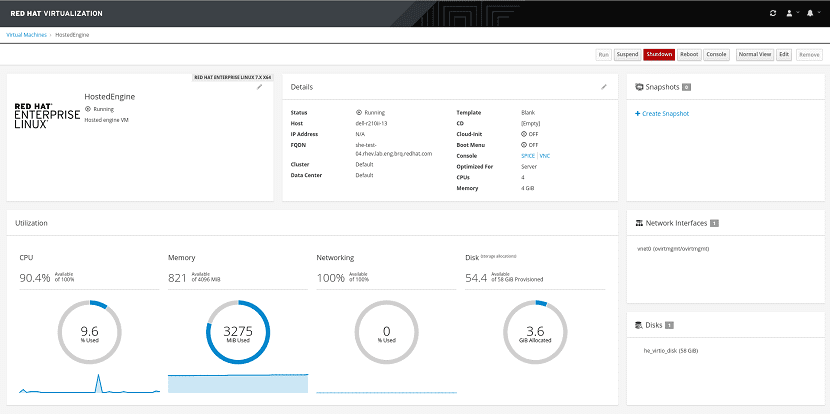
oVirt It is a system based on the KVM hypervisor and the libvirt library to deploy, maintain and monitor a set of virtual machines and manage the cloud infrastructure.
Virtual machine management technologies developed at oVirt are used in Red Hat's enterprise virtualization product and they can act as an open source alternative to VMware vSphere.
In addition to Red Hat, Canonical, Cisco, IBM, Intel, NetApp and SUSE are also involved in the development of oVirt. The project code is distributed under the GPLv2 license.
About oVirt
oVirt is a stack that covers all levels of virtualization, from the hypervisor to the API and GUI interface.
Even though KVM is positioned as the primary hypervisor in oVirt, the interface is implemented as a superstructure on top of the libvirt library, which abstracts from the hypervisor type and is suitable for managing virtual machines based on various virtualization systems, including Xen and VirtualBox.
As part of oVirt, an interface is being developed to quickly create highly available virtual machines with support for live migration of environments between servers without stopping work.
The platform provides tools for creating dynamic balancing rules and cluster resource management, cluster power management mechanisms, virtual machine image management tools, components for converting and importing existing virtual machines.
Supports a single virtual data repository, accessible from any node.
The interface contains a developed system of reports and administration tools that allow you to manage the configuration at the infrastructure level, as well as at the level of individual virtual machines.

oVirt handles three types of components or versions so to speak, of which are the following:
- oVirt Node: it is the component that will be installed KVM and VDSM. For those who come from VMWare, it would be the equivalent to ESXi
- oVirt Engine: it is the administration of the oVirt Node set. For those who come from VMWare, it would be the equivalent of Virtual Center
- VDSM (Virtual Desktops and Servers Manager daemon): it is the demon in charge of sending the orders to the KVM and in turn reporting to oVirt Engine. The functionality of the VDSM is to contact libvirt.
New version of oVirt 4.3.0
After more than a year of development, oVirt 4.3.0 is released. Ready packages are available for Red Hat Enterprise Linux 7.6 and CentOS 7.6. Ready-to-deploy iso images are also available.
Within of the main characteristics found in this new release you will find Q35 (ICH9) chipset support with the ability to use UEFI and UEFI Secure Boot.
As well as support for server systems with Skylake microarchitectural processors and AMD EPYC.
A new smbus driver has been added to the Windows-based guest kit, and the capabilities of the virt-v2v utility designed to convert virtual machine images for launch under KVM are also extended.
This includes converting VMware ESX VM virtual machines with snapshots.
On the other hand, we can also highlight that support was added to import and export templates in OVA format.
As well as full support for live migration of virtual machines based on the "High Performance VM" profile.
Finally, Microsoft's Failover Cluster Support (SCSI persistent reservation) for drives in Direct LUN mode is also highlighted.
Of the Other news found in this new version we can list the following:
- A new page has been added to the web interface with detailed information about the virtual machine.
- Implemented user interface for cluster upgrade.
- Support for security groups has been added to OVN (Open Virtual Network).
- The ability to use static IPv6 addresses has been implemented.
- Added the ability to use the Neutron framework from the OpenStack 13 platform as a third-party provider to create, configure, and maintain networks.
- Added support for OpenStack 14's Skydive network analyzer.
If you are interested in knowing more and the installation guide, you can visit the following link.